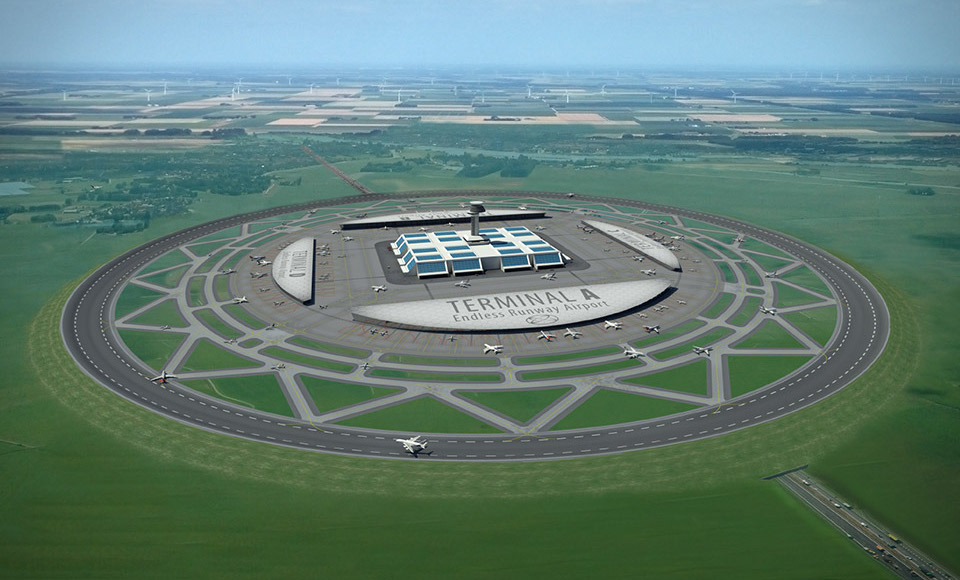Airports go to extensive, and sometimes eccentric, lengths to entice travellers. Take Singapore Changi’s butterfly garden. Or Incheon’s golf course. Or Amsterdam’s Schiphol Airport, which boasts the world’s first permanent airport library, with a collection of 1,200 books translated into 29 languages.
But while the clever trappings are fun, they’re not necessarily what an airport needs.
The planet’s air travel hubs are increasingly bogged down by passengers, and along with capacity challenges, also face physical constraints from wind during takeoffs and landings. Little can be done to improve the performance of airports as-is.
Enter ‘The Endless Runway‘, a radical concept from Dutch scientist Henk Hesselink that proposes a round, 3.5 km banked runway that encircles the terminal building. The circular runway would take up just a third of the space of a conventional airport, and allow up to three planes to take off and land simultaneously.
The project would solve one of the major limiting factors facing airports. A standard runway results in a dependency on wind direction and requires aircraft to use the same approach path. A circular runway, however, would allow takeoff and landing in any direction. Wind direction becomes irrelevant.
Hesselink’s team at the Netherlands Aerospace Centre used flight simulators and computerised calculations to test the revolutionary design. Their research has found that not only do 360-degree runways mean more efficiency for airports and an enhanced experience for travellers, they also cut down on noise for residents living nearby by allowing flight paths to be more widely distributed.
It’s a win-win-win.
That is, if it ever happens. The project is exceedingly ambitious, and Hesselink told International Airport Review that it was designed to provide solutions beyond 2050. With luck, he added, the attention it’s receiving now will speed up the process… but we’re probably still looking at 20 more years of the straight status quo.
